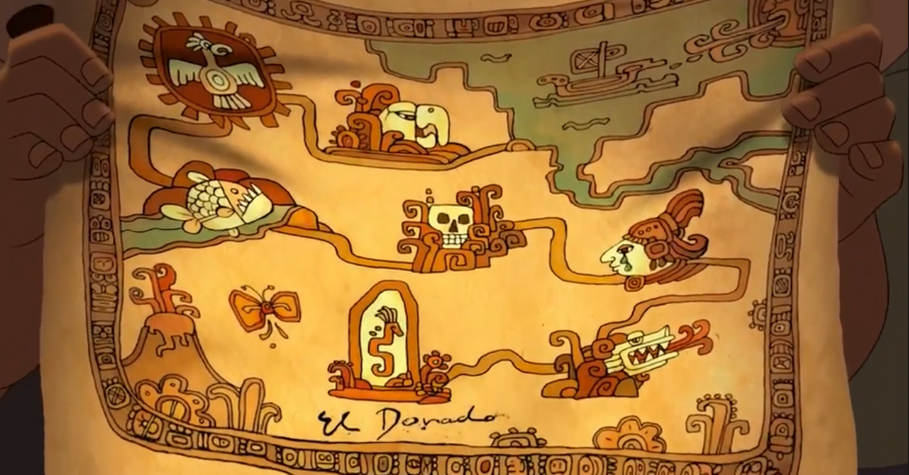Unraveling The Myths And Legends Of El Dorado
Share
The legend of El Dorado has captivated adventurers, historians, and treasure hunters for centuries. This mythical city of gold, said to be hidden deep within the jungles of South America, has inspired countless expeditions and tales of fortune. But what is the truth behind this elusive legend? Let’s embark on a journey through the myths and legends surrounding El Dorado, exploring its origins, the historical context, and the impact it has had on culture and exploration.
The Origins of El Dorado
The term "El Dorado" translates to "The Golden One" in Spanish, initially referring to a tribal chief of the Muisca people in present-day Colombia. According to legend, this chief would cover himself in gold dust and perform rituals at Lake Guatavita, throwing gold offerings into the water as a tribute to the gods. This spectacle of wealth and opulence quickly spread, leading to the belief that a city made entirely of gold awaited discovery.
The Muisca Rituals
The Muisca civilization was known for its rich culture and intricate goldwork. The rituals performed by the El Dorado chief were not merely for show; they were deeply rooted in the Muisca's spiritual beliefs. The lake itself became a focal point for treasure seekers, as many believed that the gold offerings still lay at the bottom, waiting to be retrieved.
The Quest for El Dorado
As word of El Dorado spread, European explorers began to set their sights on South America. The Spanish Conquistadors, driven by greed and ambition, embarked on perilous journeys into the uncharted territories of the continent. Notable figures such as Gonzalo Pizarro and Francisco de Orellana led expeditions in search of this fabled city, often facing treacherous conditions and hostile encounters with indigenous tribes.
Notable Expeditions
-
Gonzalo Pizarro (1530s): Pizarro, a cousin of the infamous Francisco Pizarro, led an expedition into the Andes in search of El Dorado. His journey was marked by hardship, including starvation and conflict with local tribes. Although he did not find the city, his travels contributed to the European understanding of the region.
-
Francisco de Orellana (1541): Orellana is credited with the first complete navigation of the Amazon River. His expedition was initially aimed at finding El Dorado, but he ultimately discovered the vastness of the Amazon rainforest and its diverse ecosystems.
The Impact of El Dorado on Culture
The legend of El Dorado has transcended history, influencing literature, art, and popular culture. From novels to films, the allure of the golden city continues to inspire creativity and imagination.
Literary References
Many authors have woven the tale of El Dorado into their works. One of the most notable is Sir Walter Raleigh, whose writings about his expeditions to South America in the late 16th century fueled the myth further. His accounts painted a vivid picture of a land rich in gold and resources, igniting the imaginations of readers across Europe.
Modern Interpretations
In contemporary culture, El Dorado has been depicted in various forms of media, including movies and video games. The quest for the city often symbolizes the pursuit of dreams and the consequences of greed. It serves as a cautionary tale about the lengths to which people will go in search of wealth and the impact of colonization on indigenous cultures.
The Reality Behind the Myth
While the legend of El Dorado is steeped in myth, it is essential to recognize the historical context in which it emerged. The Spanish conquest of the Americas was marked by violence and exploitation, leading to the decimation of indigenous populations and cultures.
Archaeological Discoveries
Recent archaeological findings have shed light on the Muisca civilization and their practices. Excavations around Lake Guatavita have revealed artifacts and evidence of the rituals that inspired the El Dorado legend. These discoveries provide a more nuanced understanding of the cultural significance of gold in Muisca society.
Planning Your Visit to El Dorado's Legacy
If you're intrigued by the legend of El Dorado and wish to explore its historical roots, consider visiting Colombia. The country offers a wealth of cultural experiences, including tours of indigenous sites and museums dedicated to the Muisca civilization.
Key Attractions
-
Lake Guatavita: This sacred lake is a must-visit for anyone interested in the El Dorado legend. Guided tours provide insight into the rituals of the Muisca people and the ongoing archaeological efforts in the area.
-
Museo del Oro (Gold Museum): Located in Bogotá, this museum houses an extensive collection of pre-Columbian gold artifacts, showcasing the artistry and craftsmanship of the Muisca and other indigenous cultures.
Best Time to Visit
The best time to visit Colombia is during the dry season, which runs from December to March. During this period, the weather is typically pleasant, making it ideal for outdoor exploration and cultural activities.
Conclusion: The Enduring Allure of El Dorado
The legend of El Dorado serves as a powerful reminder of the human desire for wealth and adventure. While the city of gold may remain a myth, its impact on history and culture is undeniable. As you contemplate your own adventures, consider the stories that shape our understanding of the world and the treasures that lie beyond mere gold.
Whether you seek the thrill of discovery or the beauty of Colombia's landscapes, the spirit of El Dorado invites you to embark on your own journey of exploration and wonder.
For those eager to experience the rich history and culture of Colombia, consider booking your flights and accommodations through the following links: Hotels & Flights and Transfers.





